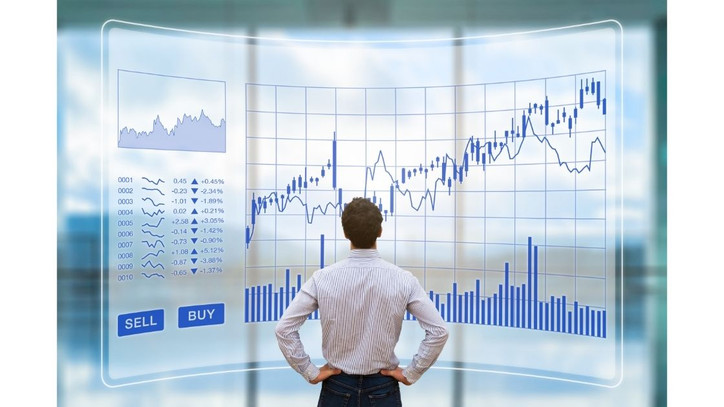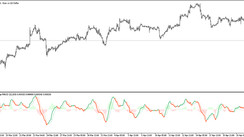When it comes to decision-making in any walk of life, knowledge is power. An informed decision is more likely to go right, than a random decision made without any logic to back it up. This holds especially true in the fickle yet exciting world of forex trading, where volatility is at a high and markets can turn at a moment's notice, catching you unaware as you make every effort to get the most out of your trading capital and strategies.
As a forex trader, arming yourself with the right information can vastly improve the outcome of your trade ideas and reduce the likelihood of losses. Information can consist not only of a clear understanding of the fundamentals that can drive price action in the currency pairs you wish to trade and in the overall forex market, but also the power to perform your very own technical analysis to gauge future trends on how a currency pair is expected to perform over a particular timeframe. However, learning how to do this requires significant investment in terms of time and effort, not just in the beginning, but also on an ongoing basis. And not all of us have the luxury of taking time out every single day to remain committed to doing our analyses.
This is where forex trading signals come in. They are invaluable for traders, both novice and experienced, as they save you considerable time and effort, and guide you towards making better trading decisions. Forex signals published by reputable sources, such as expert, professional forex traders or signals providers, are one of the most effective ways to make the most of the forex market and improve the likelihood of success. In this article, we will discuss all the details you need to know and how to use daily forex signals to help you become a better trader.
What are forex signals?
A forex signal is a trade recommendation that suggests whether to enter into a buy or sell trade in a particular currency pair and it also provides information on the specific price point or moment at which to enter into the trade. These trade ideas are published by professional traders or third-party signal providers, who perform in-depth fundamental and technical analyses, in order to understand the movement in the forex markets, e.g. whether a particular news event, such as economic data or geopolitics’ events, will drive bullish or bearish action in a forex pair, using technical indicators on the specific currency pair’s price chart, to gauge price trends and the extent of anticipated movement, etc.
They then use this information to extrapolate the right time to enter the market, specifically the price at which to buy or sell. In addition, forex signals also offer insight into how long to wait before exiting the market, and how many pips or what percentage of profit you can potentially make on the trade idea. Some signal providers also offer a stop loss (SL) level, which can serve as a guide on how much risk you can afford to take in the event that the idea turns into a loss due to unexpected volatility.
Forex signals can close in one of two ways: either when they reach the take profit level - which is the original limit recommended, at which to exit the trade idea, or when it hits stop less, in case it goes the other way. The SL is helpful for putting a limit on the potential losses you could incur on the trade idea, and it is a vital aspect when it comes to managing your exposure to risk in the forex market. Some signal providers may also close the trade idea manually and issue an alert about such a move in case of unexpected levels of volatility driving too severe a loss.
How to use forex trading signals?
The first step in getting started with using forex signals is finding the right source to depend on, be it a professional trader or a signal service provider who relies on a team of analysts to recommend trading strategies. Ensure that you do proper background research when looking for a reputable provider to turn to. An online search will return thousands of results, with quite a few players advertising guaranteed profits. Keep in mind, however, that in the world of financial markets, there is no such thing as sure shot success. But worry not! That's partly where the excitement of becoming a trader lies.
Once you sign up for a reliable forex signals service, the next step is to learn how to use them correctly, to help you grow your trading account consistently and carefully. There are several guides on websites like Investopedia.com, that can help you learn how to analyse trade ideas and make the most of the recommendations that you gain access to. Make sure you subscribe to alerts, whether they come in via SMS, email or push notifications on your smartphone, as when it comes to forex trading signals, timely information is key to making the most of the trade ideas.
You can then use the trading recommendations being shared in one of two ways: you can choose to copy the idea and place the trade as is, or you could use the levels mentioned to bolster your own analysis, in order to customize the entry and exit price, based on the level of risk you wish to take on a particular idea.
Determine the appropriate amount of your trading capital you wish to stake on each forex signal. This is known as position sizing, and it is essential to ensure that you don't lose too much money in case the trade does not go your way. It's enticing to risk too much capital in the hopes of making significant profits, but remember, forex trading is a game best played patiently, and it's better to be in it for the long run, in order to generate the most growth.
In addition to position sizing, you can also customize the lot size for each trade you enter - keep in mind that a smaller lot size is recommended when starting out, as it helps you manage your risk more effectively and prevents too much of a loss. The next thing you need to adjust is the amount of leverage. While your forex broker may offer leverage as high as 100 times, which can give you great profits, it can also drive great losses in your trades. Choose your leverage wisely, as lower profits are still safer than higher losses.
Conclusion
Whether you use forex signals on a daily basis for every trade idea you wish to place, or refer to them every now and then, either as a confirmation of your very own analysis, or to enhance it, they are an extremely vital tool to leverage when you want to make the most of your trading strategies. No matter how you use them, remember that profits are never guaranteed in trading, so it is best to steer clear of providers who make such false promises. As a forex trader, be prepared to make some losses along the way, although relying on forex signals as an additional tool can minimize your risk as you work towards growing your assets.





